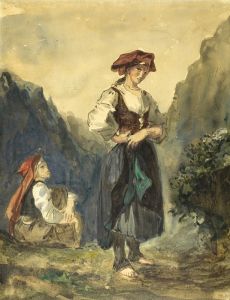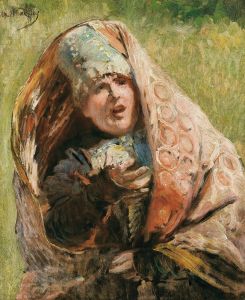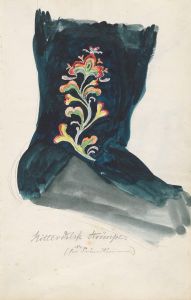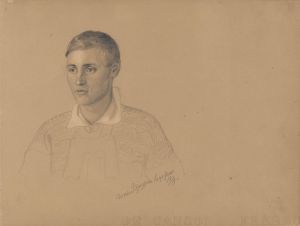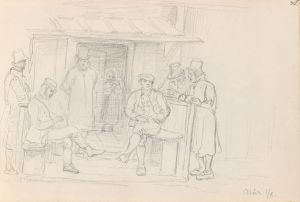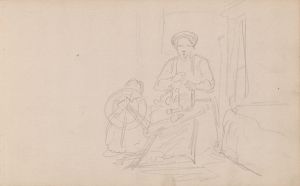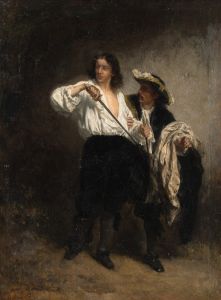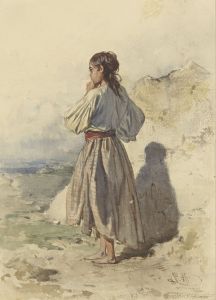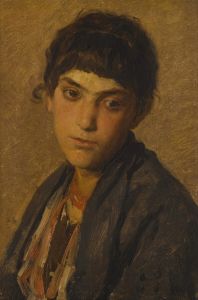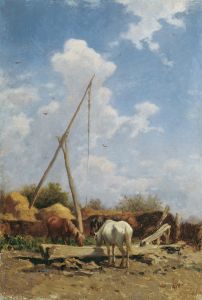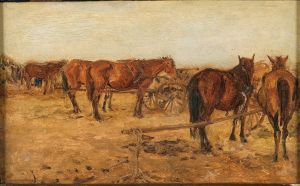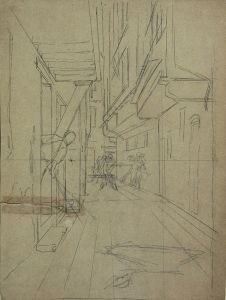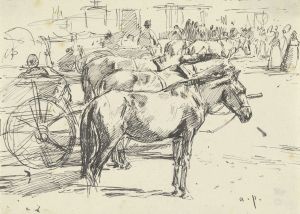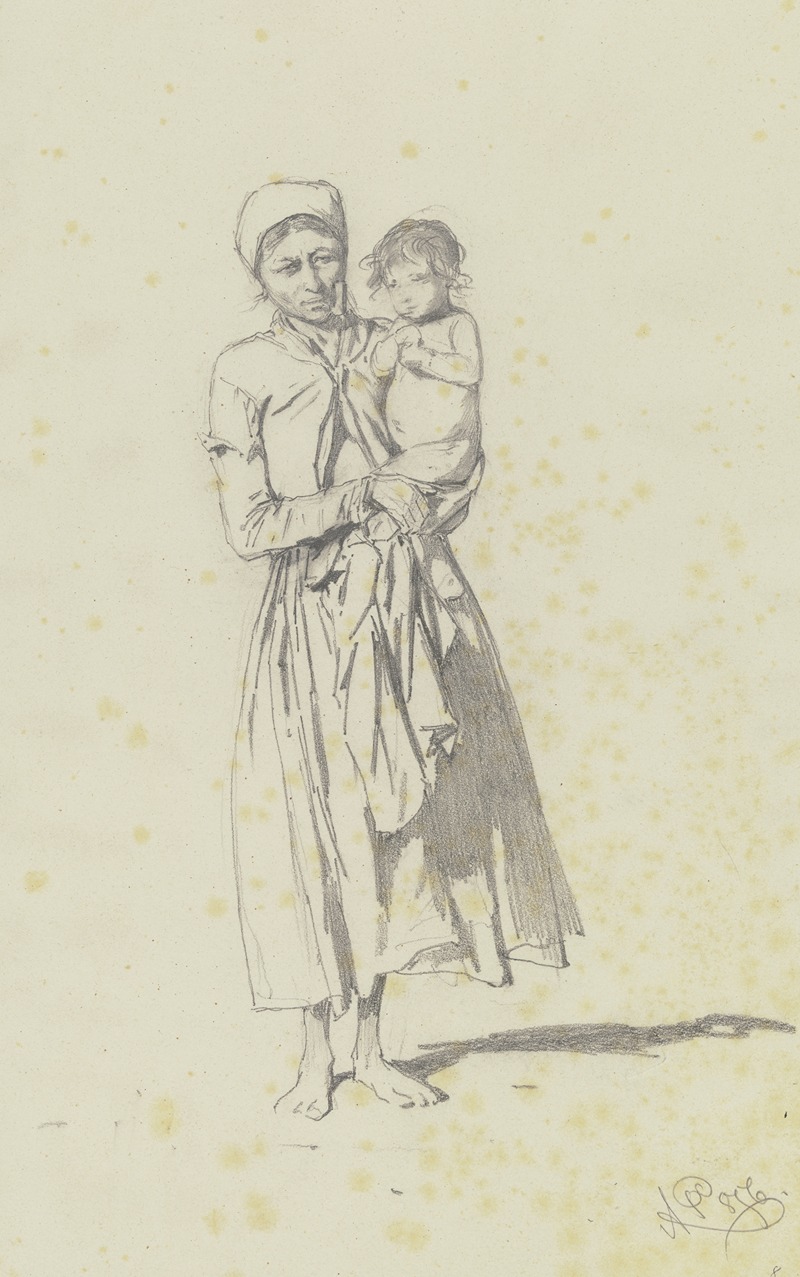
Stehende Bäuerin, ein Kind im Arm haltend
A hand-painted replica of August von Pettenkofen’s masterpiece Stehende Bäuerin, ein Kind im Arm haltend, meticulously crafted by professional artists to capture the true essence of the original. Each piece is created with museum-quality canvas and rare mineral pigments, carefully painted by experienced artists with delicate brushstrokes and rich, layered colors to perfectly recreate the texture of the original artwork. Unlike machine-printed reproductions, this hand-painted version brings the painting to life, infused with the artist’s emotions and skill in every stroke. Whether for personal collection or home decoration, it instantly elevates the artistic atmosphere of any space.
August von Pettenkofen was an Austrian painter known for his genre scenes and depictions of rural life. One of his notable works is "Stehende Bäuerin, ein Kind im Arm haltend," which translates to "Standing Peasant Woman Holding a Child." This painting exemplifies Pettenkofen's focus on everyday life and his ability to capture the essence of his subjects with empathy and detail.
Pettenkofen was born in Vienna in 1822 and initially trained at the Academy of Fine Arts in Vienna. His early work was influenced by the Biedermeier style, which emphasized realism and attention to detail. However, his artistic direction took a significant turn after his experiences during the Hungarian Revolution of 1848. The events he witnessed during this period deeply impacted him, and he began to focus more on the lives of ordinary people, particularly those in rural settings.
"Stehende Bäuerin, ein Kind im Arm haltend" is a testament to Pettenkofen's mature style, where he combines a keen observation of human character with a warm, earthy palette. The painting depicts a peasant woman standing with a child in her arms, a common scene in rural communities. The woman's attire and the simplicity of the background suggest a setting that is both humble and authentic, reflecting the everyday life of the peasantry during the 19th century.
Pettenkofen's work is characterized by its attention to the nuances of light and shadow, which he uses to bring a sense of depth and realism to his subjects. In this painting, the gentle play of light across the woman's face and the child's features adds a layer of intimacy and tenderness to the scene. The artist's brushwork is both precise and expressive, capturing the textures of the clothing and the softness of the child's skin.
Throughout his career, Pettenkofen was drawn to the landscapes and people of Hungary, particularly the region around Szolnok, where he spent considerable time. This area provided him with a wealth of inspiration, and he became part of a colony of artists who were similarly captivated by the rural Hungarian landscape and its inhabitants. His works from this period are noted for their ethnographic accuracy and sensitivity, offering a window into the lives of the people he portrayed.
"Stehende Bäuerin, ein Kind im Arm haltend" is a reflection of Pettenkofen's commitment to portraying the dignity and resilience of rural life. His paintings are not just artistic expressions but also serve as historical documents that provide insight into the social and cultural contexts of the time. Pettenkofen's ability to convey emotion and narrative through his art has earned him a respected place in the canon of 19th-century European painting.
August von Pettenkofen continued to paint until his death in 1889, leaving behind a legacy of works that continue to be appreciated for their artistic merit and historical significance. His paintings, including "Stehende Bäuerin, ein Kind im Arm haltend," remain valuable for their ability to capture the spirit of an era and the enduring human stories within it.





